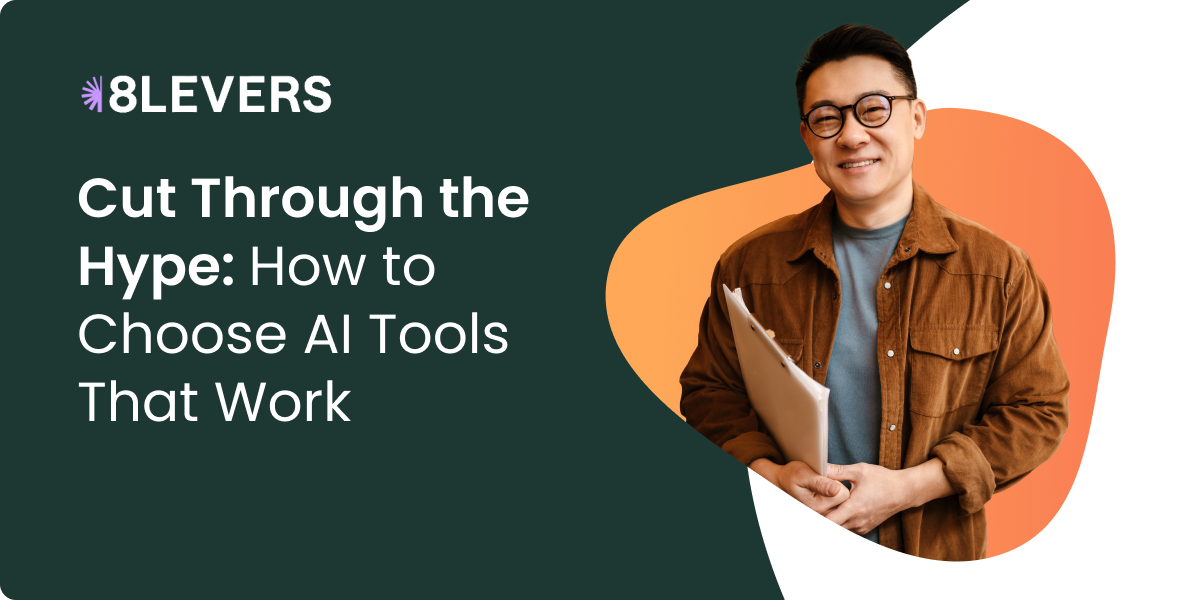This article is written by Lori Niles-Hofmann, founder of 8Levers. 8Levers is a strategy firm that helps enterprise learning teams shift from support functions to drivers of business performance.
A few weeks ago, I needed to upgrade the prescription for my glasses. It was pretty routine—if not a glaring reminder of ageing. While deciding on the types of lenses, the optometrist told me I should select the ones with AI technology. I’m no engineer, but I’m fairly certain there’s no embedded Large Language Model, Model Context Protocol, or Retrieval-Augmented Generation in that glass. These lenses didn’t even darken in bright sunlight. But they did cost 30% more.
This pricing model is everywhere. I recently purchased a .com domain and was upsold the .ai version for quadruple the cost. Did I buy it anyway? Yes.
We’re in the midst of the biggest technology revolution we’ll ever see. The pace of change is staggering, making it hard for the average consumer to keep up. Understandably, vendors want to be seen as bleeding-edge, and adding AI to their wares is one way to signal that. Likewise, as a learning leader, you may be under pressure to implement AI to streamline processes, shorten timelines, and reduce budgets.
So, where to begin?
My first port of call with clients is the principle of “garbage in, garbage out,” or GIGO. Before you hit the exhibition floor with a budget to spend, make sure your data is in good shape. This is easier said than done. But unless you take the time to clean and structure those .csv files, it will be impossible to draw any insights, let alone implement agents with any sense of reliability.
Next, think hard about your business. Do you know the pain point you are trying to solve? Much of what’s out there is a solution in search of a problem. Likewise, you need to dig into how your company operates. This means determining whether you have the right people, culture, and skills to implement your chosen tech at scale. If not, that’s another hygiene factor to sort out first.
All of this leads to a tougher question: how do you accurately evaluate EdTech and HRTech with all the AI noise surrounding it? How do you separate fact from a fictional roadmap, or the sci-fi vision from reality?
To help guide these conversations, I use a selection flowchart to work through the main considerations when investing in AI in EdTech. Not all the decision points apply to every industry or company, but there are a few universal buckets worth your time.
Not every shiny AI tool is the right fit. L&D teams need tools that offer real value—not just flashy features. When ChatGPT burst onto the scene in 2022, the market was flooded with AI tools promising to build learning content in minutes for just $20. Most disappeared just as quickly. Why? Because teams realized they could get comparable results with a good prompt, some know-how, and a few basic tools. Not every solution is worth your budget—or your time. Some challenges still need a human touch. Start with simple tools to test ideas, and invest where technology truly enhances your strategy.
Learning-specific validation is another key bucket. Is the tech based on sound learning principles? Can the vendor articulate these? Has the tool been tested for learning transfer? Can it learn from usage and improve over time? If this feels overwhelming, consider the silver lining: remember when you had to show ROI on learning interventions? Now you get to put vendors in the hot seat.
Let’s move to the showstopper: cost. There’s the headline price, and then the extras. Be clear on these before the invoice reaches Accounts Payable. Will you be charged for a pilot? What about customisation, support, or data migration? Also, make sure you understand if the vendor takes responsibility for errors or biases in the AI.
If you’re in Europe, the European Union has made explainability—meaning the AI system offers clear, understandable reasons for its decisions and outputs—a legal requirement for certain workplace AI tools. Similar laws are cropping up elsewhere. Even if you’re not directly subject to these, your AI tools might still need to comply with GDPR, PIPEDA, HIPAA, and more.
While our flowchart may look daunting at first, it’s designed to bring rigour and clarity into a space still full of hype and half-baked promises. You don’t need to go it alone. Bring in IT, Risk, and if there’s an AI team, bribe them with pastries and start the conversation.
The goal is to avoid analysis paralysis and land on tech that actually works. Just because it says AI doesn’t mean it’s smart. You, however, should be.
We recently walked through this diagnostic tool in a live session. The full webinar recording is available for those who want to dive deeper into the framework.
For more information on EdTech transformation, visit: www.8levers.com

About the author
Lori Niles-Hofmann is a senior learning strategist with over 20 years of L&D experience across many industries, including international banking, management consulting, and marketing. She specialises in large-scale digital learning transformations and is passionate about helping companies navigate through the ambiguity of change.

